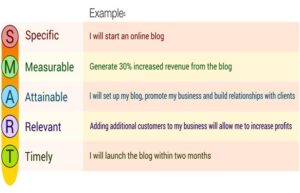A few years ago, the response to the question, “What are the primary goals and objectives of Human Resources in the organization?” was explicit. Human Resource’s basic objective and purpose were “Right People in the Right Place at the Right Time.” HR Professionals were expected to deliver nothing more; yet the answer to that question is now considerably more nuanced. HR’s overall aims and objectives are more focused on the organization’s productivity, performance, engagement, innovations, and sustainability. Why have HR Goals and Objectives shifted so dramatically? Because the HR purpose has shifted substantially, and the function of Human Resources is now much larger than it was previously.
Human Resources began as a social care unit and has since grown into personnel management before birthing the advanced HR management role. Because expectations have risen, the goals and objectives have been revised. Human Resource Management now sets the strategic agenda for the organization’s people management. HR does not manage employees; rather, it creates tools for managers to use in managing, leading, and developing their employees as the organization’s employee value rises. A good Human Resource Management (HR) is involved in everything, and it affects each employee and the whole company’s workforce. It supports the company’s goals of profit and growth by managing the needs of and providing services for its employees. Along with planning varied events, the HR also deals with major key influences of the organisations such as equal employment opportunity issues, processes, documentation of onboarding and offboarding as well employee-related problems. The finest HR departments are staffed by business professionals who have specialized in human resources and have a thorough grasp of the corporate structure, goals, and strategy.
Using SMART to Define Goals:
Most objectives nowadays should be SMART. The methodology is used for performance management and goal planning since it is simple and straightforward. The SMART Goals method offers a strategy for defining a specific objective that is understood and generally agreed upon. It serves as a guide to managers as they create team goals. It is the manager’s responsibility to create clear and specific goals for employees.
The S.M.A.R.T stands for.
Specific | Measurable | Achievable | Relevant | Timebound
The term “specific” denotes that the aim must be defined in complete detail. Measurable refers to the precise definition of metric used to assess objective performance. The Achievable indicates that the manager has established reasonable targets. The Relevant represents the manager’s motivation. The term “Time-Bound” refers to management and staff, establishing dates for goal fulfilment or benchmarks to be met.
12 HR Skills Every HR Generalist should have
- Communication Skills
- Administrative Expert
- HRM Knowledge and Expertise
- Proactivity
- Advising
- Coaching
- Recruitment and Selection
- HRIS Knowledge
- Intercultural Sensitivity and Language Skills
- Analytically Driven and Oriented
- HR Reporting Skills
- Teamwork
Why is it Important to set Smart Goals?
The most essential phases in a company’s management process are the formulation of objectives and the development of their related action plans. Goals are important for attaining personal success as well as company-wide progress.
There are five compelling reasons to create SMART Goals.
- Goals motivate people to act.
- Goals, aid in directing your focus.
- Goals retain a positive momentum.
- Setting personal goals, assists in aligning one’s behavior with the overall perspective.
- Goal-setting is crucial for self-leadership.
One approach to implement the SMART model in human resources is to split the department’s duties into seven categories, then develop SMART goals for each category. Here is an overview of how to divide HR’s functions into seven parts:
- Ensuring that the company follows all employment laws and regulations that apply to it.
- Recruiting and staffing.
- Benefits and compensation.
- Education and training.
- Employee relations.
- Advising management on employee-related matters.
- Risk management.
To conclude, Smart Goals are effective. They provide a tangible goal to survive for. They allow breaking a more complex objective into smaller, achievable steps. They also set a timescale for your goals to get things done. The specific requirements of individual employees are rising and companies, therefore, need to focus on providing an outstanding experience to the employees to retain the best talent.










